Workload Indicators of staffing need (WISN)
The health workforce is the fulcrum on which health system performance relies. Human resources for health as a strategic area of focus is crucial to affordable, accessible and high-quality health services. The ability of a country to meet its health commitments and goals largely depends on the number, skills, competencies and availability of health workers, and on whether those workers are organized and equitably distributed to deliver integrated, people-centred health services. The health workforce is essential to achieving universal health coverage and the Sustainable Development Goals, especially Indicator 3.c.1, which relates to ”health workforce density and distribution” and improved data on human resources for health.
Health service managers around the world face increasing HRH challenges, such as:
- inadequate resources to respond to the populations’ demand for services;
- the distribution of human resources being generally poorly balanced between urban and rural areas, and between primary, secondary and tertiary levels of care;
- inefficiencies due to uncoordinated HRH practices from various stakeholders; and
- weak HRH coordination mechanisms and weak human resources for health information systems.
The Workload Indicators of Staffing Need (WISN) method is based on a health worker’s workload, with activity (time) standards applied for each workload component. This principle has long been used in business but was not employed in the health sector until the late 1990s, when the WISN method was field tested and used in several countries.
NEW WISN Manual
Access the WISN Tool
Please visit the community of practice (self-registration) to access the software tool.
WISN implementation groups and their roles

Workload Indicators of Staffing Need (WISN) process infographic
WISN methodology infographic
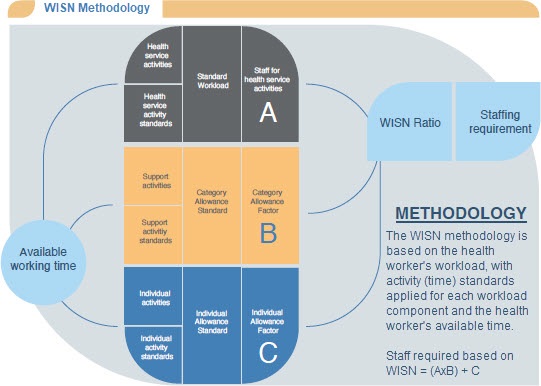
Workload Indicators of Staffing Need (WISN) methodology infographic
Publications
Countries' experiences on implementing WISN methodology for health workforce planning and estimation
Publication of this Human Resources for Health journal supplement was supported by the World Health Organization (WHO). Articles have undergone the journal's standard peer review process for supplements.
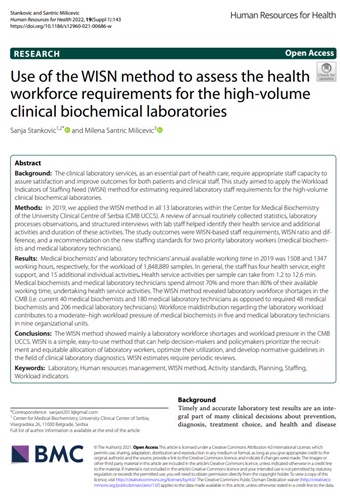
Use of the WISN method to assess the health workforce requirements for the high-volume clinical biochemical...
The clinical laboratory services, as an essential part of health care, require appropriate staff capacity to assure satisfaction and improve outcomes for...
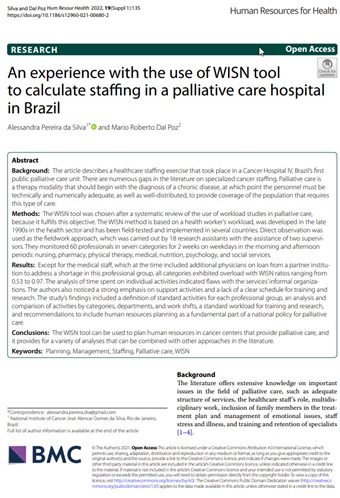
An experience with the use of WISN tool to calculate staffing in a palliative care hospital in Brazil
The article describes a healthcare staffing exercise that took place in a Cancer Hospital IV, Brazil’s first public palliative care unit. There are numerous...
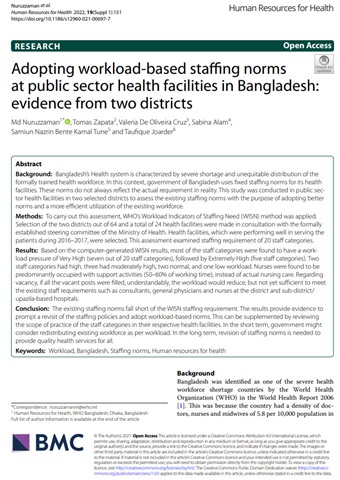
Adopting workload-based staffing norms at public sector health facilities in Bangladesh: evidence from...
Bangladesh’s Health system is characterized by severe shortage and unequitable distribution of the formally trained health workforce. In this context,...
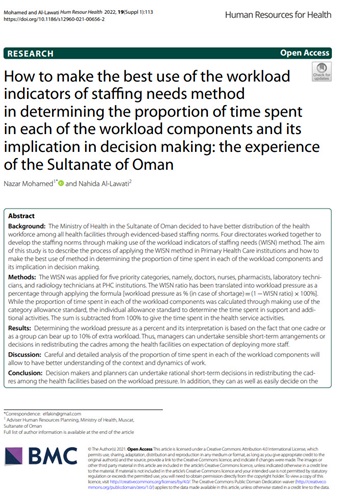
How to make the best use of the workload indicators of staffing needs method in determining the proportion...
The Ministry of Health in the Sultanate of Oman decided to have better distribution of the health workforce among all health facilities through evidenced-based...
- 1
- 2
- 3 (current)
- 4
- 5
